Surgery of Pectus Excavatum or sunken chest
Do you want to improve the appearance of your body?

- Duration: 90 - 120 minutes.
- Type of anesthesia: General.
- Type of Admission: Overnight stay in the hospital (included in the price).
- Recovery: No physical exercise for 6 to 8 weeks. Return to work in 1-4 weeks, depending on the work performed. Compression garment for 1 month.
- Definitive result: 4 - 6 months in most cases.
What is pectus excavatum?
Pectus excavatum, sunken chest or funnel chest is one of the most common disorders in the development and growth of the costal cartilages. This problem consists of a sinking of the sternum that causes an alteration of the joints of the ribs, which are deformed, sometimes projecting them forward.
Pectus excavatum is a condition whose cause is unknown; however, sometimes this disorder may be associated with other deformities such as osteogenesis imperfecta, rickets, scoliosis, Poland syndrome and others such as Marfan syndrome, Ehlers-Danlos syndrome, Noonan syndrome or Turner syndrome.
What are the signs and complications of pectus excavatum?
Although this congenital (from birth) disorder may not be noticeable during the first years of life or even until adolescence, pectus excavatum causes the chest to appear somewhat sunken. According to Chiu PH, in A cross-sectional study of lung volume development in pectus excavatum patients this malformation can be classified according to its severity into:
- Type 1: severe but symmetrical deformities, located in the sternum.
- Type 2: shallower but more diffuse and wider deformations.
- Type 3: severe cases with asymmetric deformation of the thoracic cavity.
On the other hand, in addition to the aesthetic effects on the patient, it should be taken into account that this circumstance causes, in severe cases, extra pressure to be exerted on the lung and heart, which can lead not only to problems in performing exercise or physical activity but, more worryingly, to respiratory complications, constant tiredness and fatigue, chest pain, palpitations and frequent bronchopulmonary infections. However, functional impairment due to pectus excavatum is very rare.
Treatment for pectus excavatum
Thoracic surgery has been to date the only effective treatment for the correction of this defect. For the treatment of pectus excavatum there are several types of surgical procedures such as the Nuss technique, Ravitch, or Taulinoplastia but, currently, at Antiaging Group Barcelona we have a definitive and safe method to solve this congenital problem of the rib cage through the use of implants that are custom-made, by means of a CT scan. The implant covers and models the entire defect and is implanted in depth, which is partially covered by the pectoralis major musculature. The advantages of this surgical technique are:
- Customization according to the existing congenital deformity.
- Use of a soft but solid silicone material, with a similar touch to the sternum and definitive. The edges of the implant adapt to the defect and are also covered by the musculature.
To improve the results, lipofilling (fat grafting) can be associated usually in a second time, since it is easier to see the possible small residual defects.

What is the implant procedure like?
The silicone implants are virtually designed after performing a CT scan of the patient and through a computer-assisted process, in which the thoracic cavity is reconstructed. These implants offer a minimally invasive, safe and simple solution to pectus excavatum, avoiding open chest surgery and its possible complications.

The surgical procedure is performed under general anesthesia and lasts about 60 minutes, in which the surgeon makes an incision in the thoracic cavity from which the implant slides. Afterwards, hospitalization lasts 3 days. Subsequently, physical exercise must be avoided for 8-12 weeks depending on the size of the implant.
The reference centers, such as Antiaging Group Barcelona, have received theoretical and practical training on the computerized construction of 3D implants and the different intervention techniques(pectus excavatum, Poland’s syndrome or other lack of muscles).
Real results from our patients
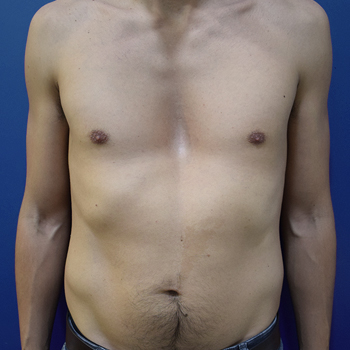
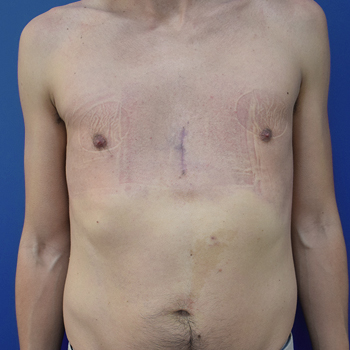
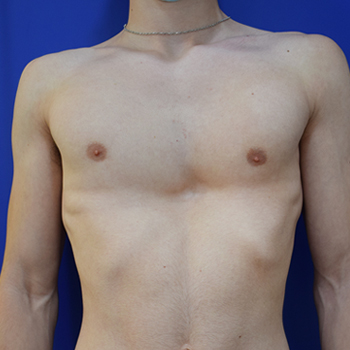
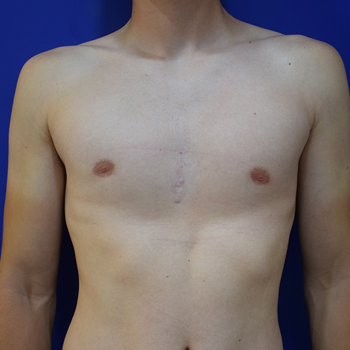

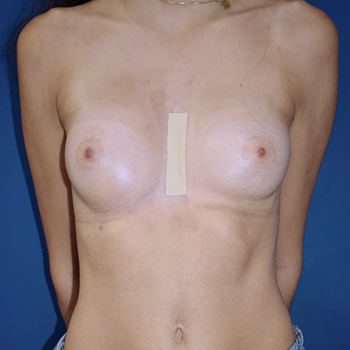

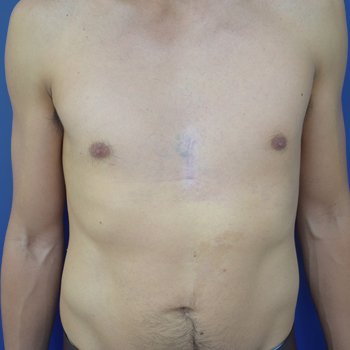
Learn all the advantages of financing your treatment with AGB and book your appointment
Opinions of our patients
EXCELENTETrustindex verifica que la fuente original de la reseña sea Google. Maravillosa experiencia con la Doctora Salvador!!!Trustindex verifica que la fuente original de la reseña sea Google. Estic encantada! Son els millors!Trustindex verifica que la fuente original de la reseña sea Google. Muy profesionales. El trato es atento y cercano. Los resultados óptimos. He quedado muy satisfecho, los recomiendo totalmente.Trustindex verifica que la fuente original de la reseña sea Google. Es la mejor clínica. Yo fue operado por el Dr. Benito. Durante mucho tiempo elegí una clínica y un médico, dudé. Pero tuve mucha suerte, ¡caí en manos de oro! Estoy muy contenta con el resultado inmejorable. El doctor es un especialista muy atento y elegante. Todo el personal de la clínica es muy agradable. 😊🌟✨💫Trustindex verifica que la fuente original de la reseña sea Google. Muy buena clínica, la doctora Salvador explica todo de manera que sabes que estas en buenas manos.Trustindex verifica que la fuente original de la reseña sea Google. Espectacular resultado gracias al dr.benito y a su equipo🥰Trustindex verifica que la fuente original de la reseña sea Google. Hace más de 15 años que confío en el doctor Jesús Benito. Un gran cirujano y una persona encantadora. Gracias por todos los cuidados !!!!Trustindex verifica que la fuente original de la reseña sea Google. Muy agradecido al Dr Benito por la confianza que se gana y que te ayuda a tomar decisiones. Muy satisfecho con su profesionalidad y los resultados. Y muy contento con su equipo por lo cómodo y fácil que te hacen todo.
Our specialist for this treatment
Dr. Jesús Benito Ruiz
Dr. Jesús Benito Ruiz is the Medical Director and Co-Founder of Antiaging Group Barcelona, with over 30 years of experience in Plastic, Aesthetic, and Reconstructive Surgery. He graduated with honors in Medicine and Surgery from the University of Valencia and specialized in Plastic Surgery at “La Fe” Hospital. He has served as President of AECEP and Vice President of SECPRE. Recognized for his innovation in surgical techniques, Dr. Benito Ruiz has developed advanced procedures such as breast augmentation with autologous fat and the scarless facelift. He is the author of numerous scientific publications and actively participates in international congresses. His awards include the Gómez Ferrer Navarro Surgery Award and the McGhan Award for his contributions to breast surgery.Frequently Asked Questions
No physical exercise for 6 to 8 weeks. Return to work in 1-4 weeks, depending on the work performed.
This surgery leaves scars, but our goal is to minimize them as much as possible and make them as inconspicuous as possible. Usually, the incision is made in the lower part of the sternum and the resulting scar can be easily concealed with clothing. In addition, we use advanced suturing and skin adhesion techniques to minimize the appearance of scars. It is important to follow postoperative instructions carefully, and it may also be helpful to use topical products to reduce the appearance of the scar after recovery.

